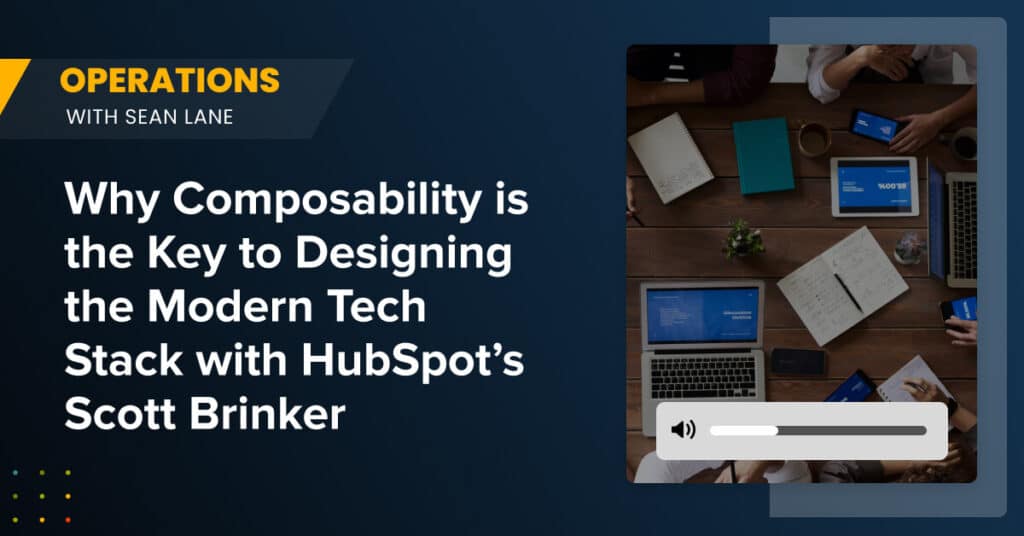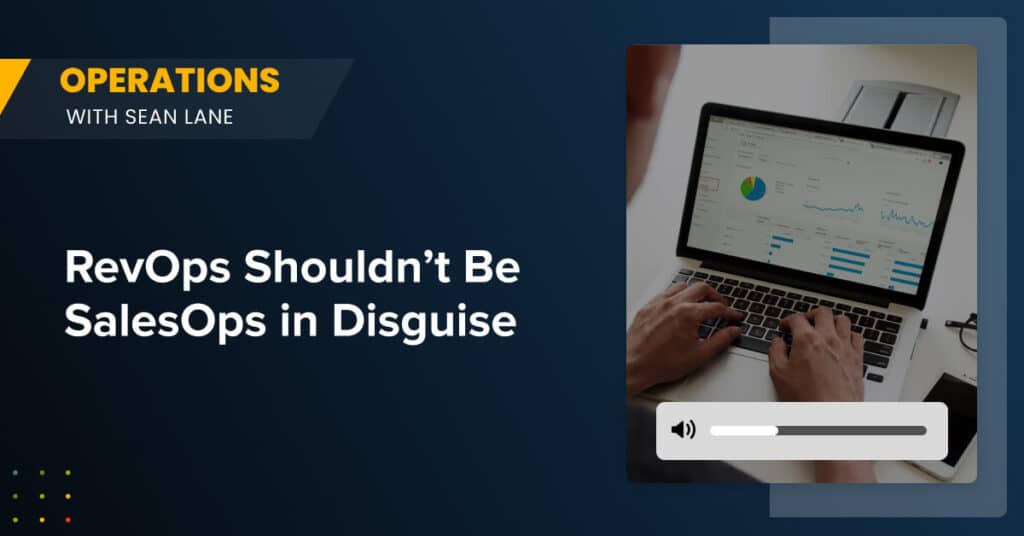Compensation Design Fundamentals
In this Fireside chat, we spoke with Sandeep Singh. Below is an edited transcript of highlights, click on the timestamps to hear the details.
Overview
- Introduction [0:35]
- Mistake #1: Compensation plans are NOT aligned with the company’s goals. [2:40]
- Mistake #2: The same compensation plan is used for different roles. [4:50]
- Mistake #3: Plans are overly focused on activities rather than outcomes. [6:43]
- Mistake #4: The compensation plan is too complex for reps to understand. [8:30]
- Mistake #5: The plan is not communicated clearly and in a timely manner. [10:48]
- Mistake #6: Too many SPIFFs. [11:45]
Introduction [0:35]
Hello everyone. I’m a sales growth and revenue operations leader who helps revenue teams achieve their go to market objectives. I’m currently working as VP of Sales Operations at WordPress VIP, leading provider of agile content management platform helping enterprise customers produce digital content faster and smarter while ensuring best in class security and scalability. Now prior to this role, I worked in operations advisory for high growth clients and before that I spent several years in sales finance strategy operations for established public companies. I’m really excited here Tyler, to talk about sales compensation because it’s an important area of revenue operations and a key factor in revenue team success.
There are six mistakes that companies make and that could apply to startups, scale ups, or even mature companies. It doesn’t matter in terms of the stage of the company.
Mistake #1: Compensation plans are NOT aligned with the company’s goals. [2:40]
It sounds very obvious, but whether the company is looking at growth at any cost, or profitable growth, there are some distinctions. We need to know if we are asking our reps to go and sell it at any cost, or look at the profitability as well while driving growth. So, for example, if a company has multiple products and let’s say one product has high ACV and high margin, it takes longer to close the deal. Another product is lower ACV, low margin, very transactional type of things, easy to close. If the reps have one revenue bucket to go after and that’s their quota, they could just fill their quota with easy sales. But this behavior doesn’t support the company’s objective of profitability.
Mistake #2: The same compensation plan is used for different roles. [4:50]
You have AES, you have SDRs, BDRs, expansion AES, CSN’s, all the different roles. A lot of times companies say “hey, we are all one revenue team, let’s have one plan for everyone. We are all one team, go kill it!” What we need to understand is that all roles and responsibilities are different, so we need to have different plans for them because their degree of selling influence is different. Companies should take note of that and design plans and pay mixes — and by pay mix I mean, fixed salary versus variable commission comp plan, the commission portion of the OTE. So pay mixes and the plan measures should be taken into consideration when designing the plan.
Mistake #3: Plans are overly focused on activities rather than outcomes. [6:43]
Plans that are not outcome or impact based are least effective. Instead of focusing just on the number of calls placed, number of calls made, or demos presented, it’s key to tie activities back to outcomes: “how many calls converted into closed deals? Closed won deals? How many demos are converted into those?” If you tie those impacts and outcomes to the plan measures for the SDR, in this example, that would be key. So if the companies are just making on the number of activities and tasks and goaling their reps on that, that’s least effective.
Mistake #4: The compensation plan is too complex for reps to understand. [8:30]
When reps have to spend a whole lot of time understanding the calculations of their commissions, that makes it less motivating for them. So I would say that plans have to align to the strategy, but then you have to balance it with simplification. Example: a lot of companies basically put the zero to 100% quota attainment and they will have different layers of commission rates. You have zero to 30%, one commission rate. A rep will get 30 to 60, and then 60 to 100. Then you also put some acceleration beyond 100%, so there will be multiple layers of acceleration. When you have so many different commission rates to work with, it’s confusing. I would suggest cutting it down to make it simpler.
Mistake #5: The plan is not communicated clearly and in a timely manner. [10:48]
Communication to the reps and explaining the plan to them is also very important.
When the quarter starts you want to make sure that the reps understand what the plan is going to be. You don’t want your reps to fly blind for weeks and weeks when your quarter has already started. So communicating to all the stakeholders in the GTM team, and not just the sales team, but also marketing, HR, and product team. Everybody should be aware of how the sales team is getting paid on things that they all collaboratively work together on. Communicating to them in a timely manner would be important but also communicating by putting together all the illustrations and examples of how the commission is being calculated. You reduce the time that they spend in understanding how they are getting paid.
Mistake #6: Too many SPIFFs. [11:45]
Companies often use too many SPIFFs. They throw them at the reps and say “okay, here is this product we want to drive growth on…this is what we want to drive more on.” Those SPIFFs are basically a distraction from the day to day job that the rep is doing. So while SPIFFs are important to attain short term objectives, the same SPIFF should not be run in a continuous manner for a longer time. It should help with your short term objective. “This is the quarter we need to achieve objective A and we are really missing on it. Let’s focus on that. Drive some space, very targeted impact base,” make that communication very clear. Too many spiffs distracts them and creates lack of focus on their core objective.










